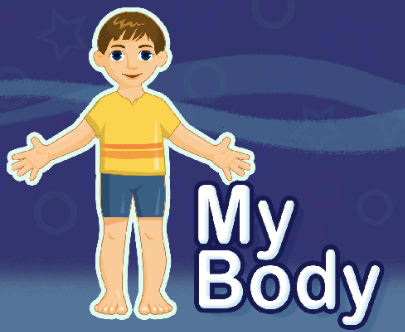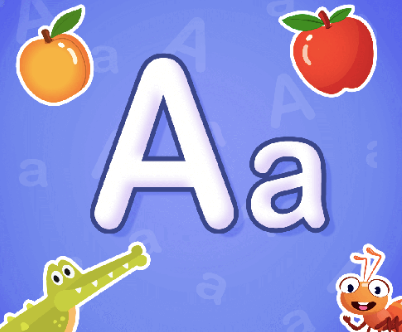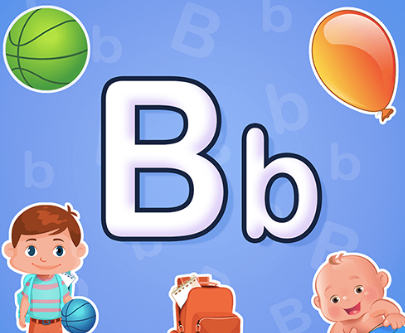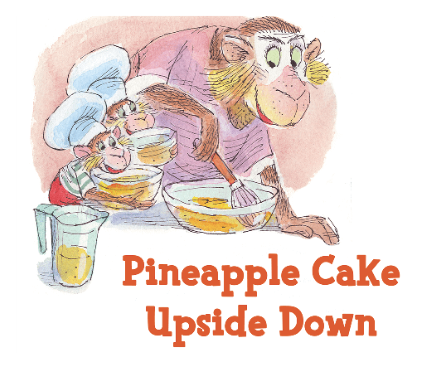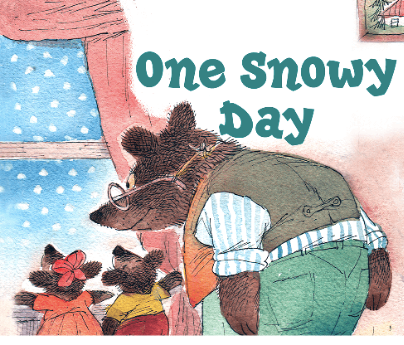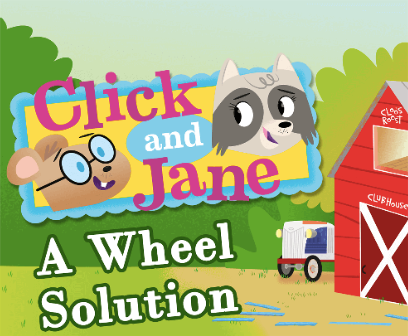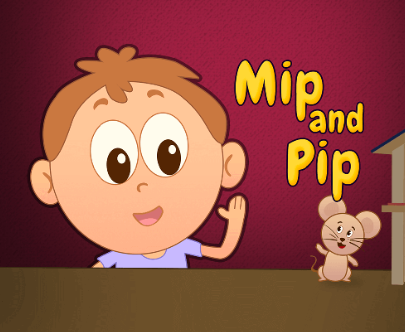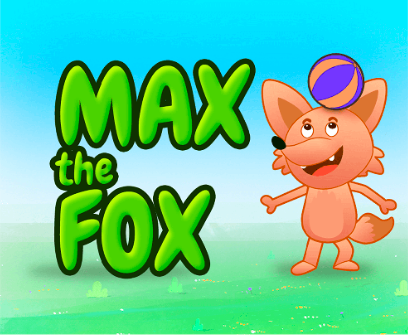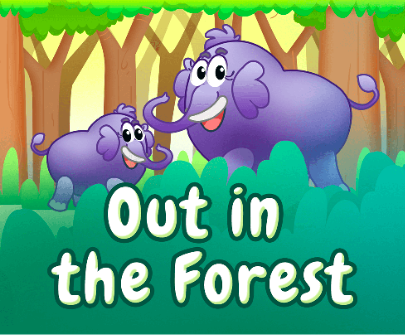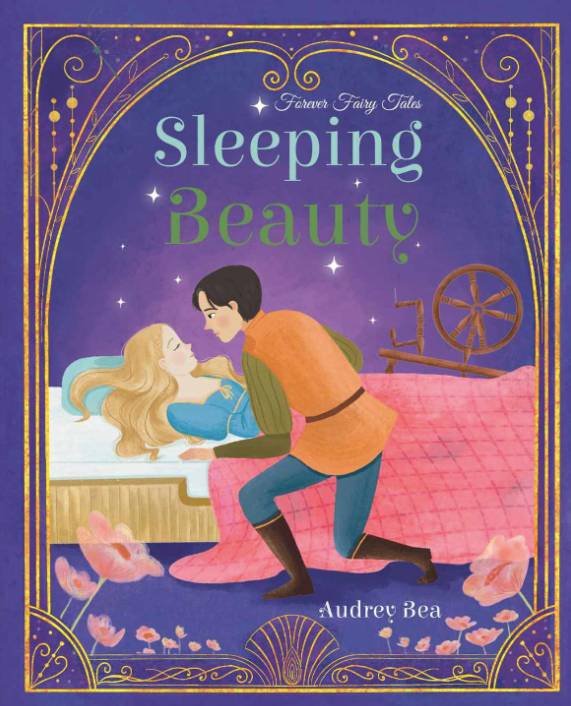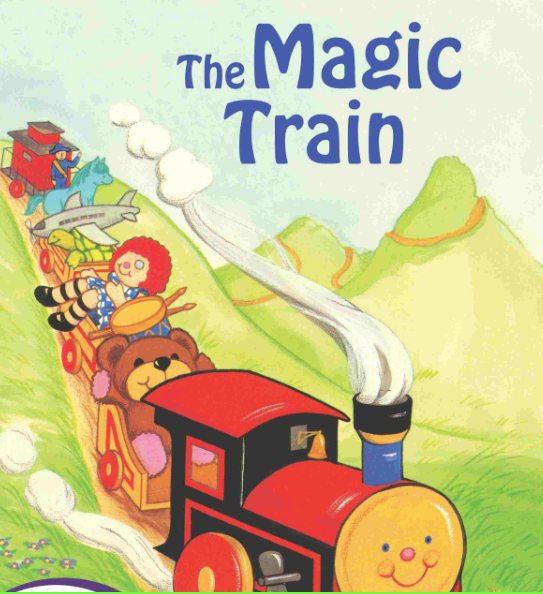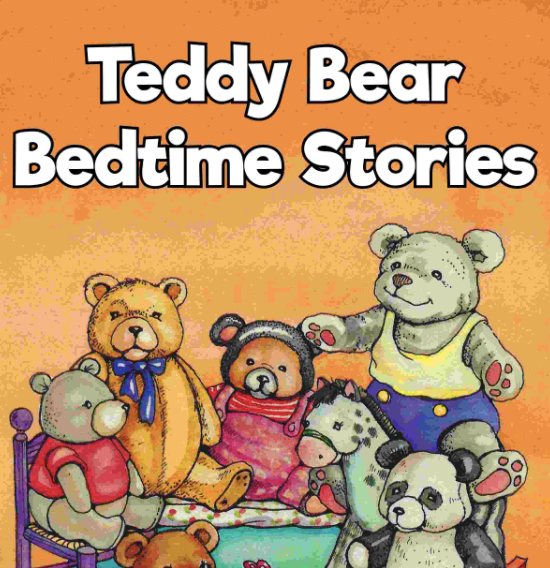Reading comprehension is a vital skill that goes beyond simply recognizing words on a page. It is the ability to understand, interpret, and engage with written text. However, studies show that many children are falling behind in this critical skill. Between 2017 and 2019, the number of students in grades 4 through 8 reading at or above their grade level declined, signaling the need to focus on fostering strong literacy foundations.
Math & ELA | PreK To Grade 5
Kids see fun.
You see real learning outcomes.
Watch your kids fall in love with math & reading through our scientifically designed curriculum.
Parents, try for free Teachers, use for free
The National Reading Panel Report identifies five essential components of reading development: phonological awareness, phonics, fluency, vocabulary, and comprehension. Among these, comprehension stands out as the cornerstone, enabling children to go beyond decoding words to fully engaging with and understanding the text.
In this blog, we will delve into reading comprehension activities for kids. These activities aim to enhance a child’s reading experience, ensuring they recognize words and truly understand and engage with them.
12 Best Reading Comprehension Activities for Kids
Every child is unique, and so is their journey with reading. Some kids might love diving straight into a story, while others might enjoy discussing it with friends or drawing out their favorite scenes. There’s no one-size-fits-all approach. With a pool of fun reading comprehension activities, we can cater to every child’s needs and preferences.
1. Story Sequencing
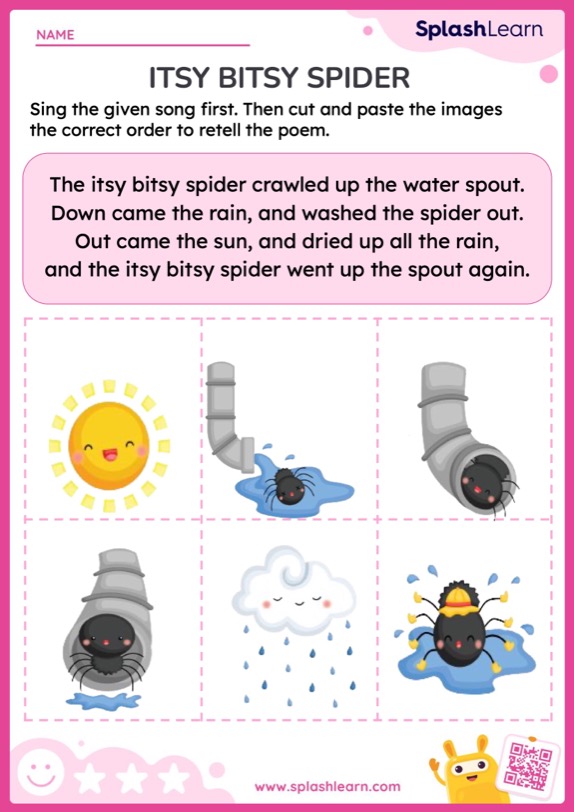
After reading a story, provide the child with a series of mixed-up events from the narrative. Their task is to arrange these events in the correct order. For younger children, use pictures instead of text. This activity is a great way to include reading games for kids in learning.
Here are some worksheets where kids will sequence stories and events. For example, they put sentences in the correct order for a familiar story like Little Red Riding Hood or look at pictures of an apple being eaten or a butterfly’s life cycle and arrange them logically. Other activities include sequencing everyday routines, like a child’s day from waking up to playing or putting events like growing plants into the right order. These worksheets help children understand how events flow, improving their comprehension and ability to retell stories accurately.
Begin here
How it Helps:
Story sequencing aids in understanding the logical flow of a narrative. It helps children grasp the concept of beginnings, middles, and ends, and the importance of sequence in storytelling. This skill is crucial for comprehension and narrative skills.
2. Question and Answer Sessions
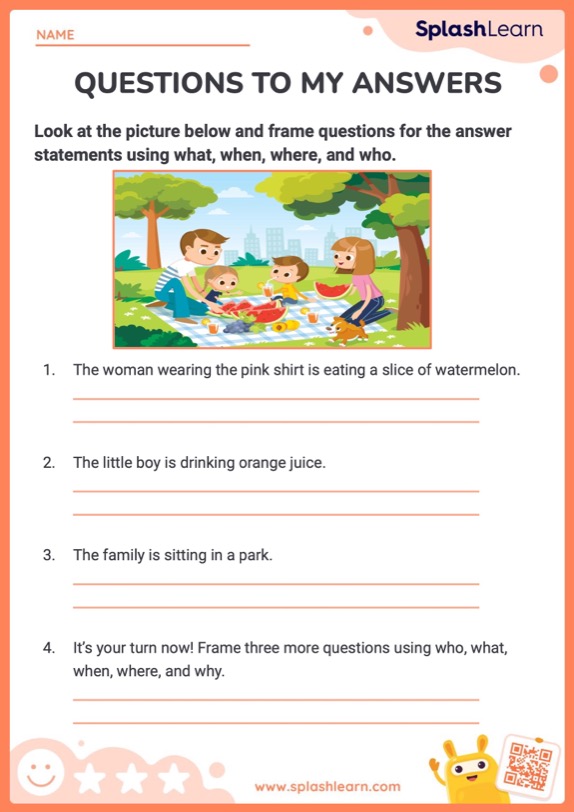
After reading a story, sit down with the child and engage in a discussion. Ask open-ended questions about the story’s characters, plot, and setting. Encourage them to think deeply and express their opinions.
Here are some worksheets where kids will read short stories or passages and answer questions about what they’ve read. For example, they respond to questions about a shark’s characteristics, a friend’s situation, or a family’s snowshoeing adventure. Some worksheets encourage kids to fill in question words in conversations or think about how they would act in specific scenarios. These activities help children build comprehension, reflect on details, and develop thoughtful answers, making reading more interactive and engaging.
How it Helps:
This activity is one of the most straightforward reading comprehension activities for students. It encourages children to recall details from the story, enhancing their memory and understanding. It also promotes critical thinking as they analyze and interpret the story’s events.
3. Picture Story Analysis
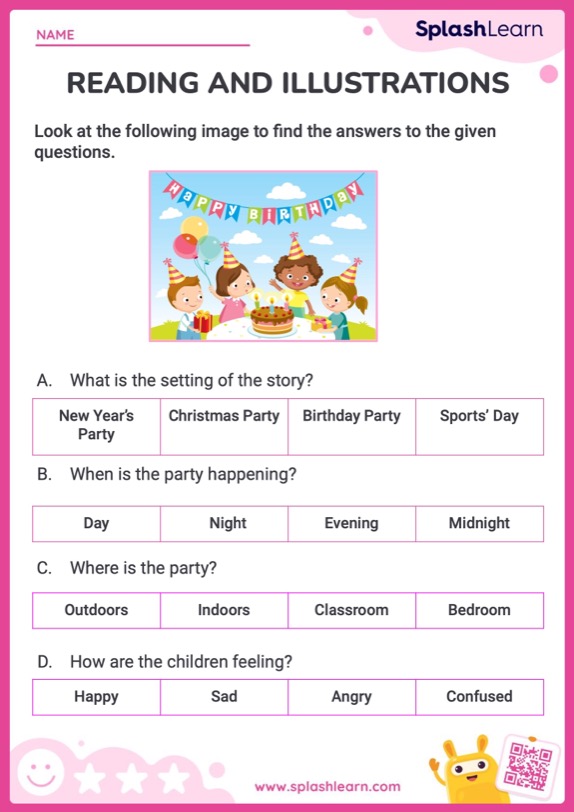
Choose a picture book or worksheet without any words or minimal text. Ask the child to narrate the story based on the illustrations they see. Encourage them to be as detailed as possible, describing the characters, setting, and events.
Here are some worksheets where kids will analyze pictures and bring stories to life. For example, they will look at a playground scene and answer questions about what they observe or match descriptions to pictures of birds and food trucks. In other activities, they’ll sequence illustrations to complete a story or add captions to describe what’s happening in the pictures. These tasks help children develop observation skills, creative thinking, and the ability to build coherent narratives.
Begin here
How it Helps:
Picture story analysis is an excellent way for children to use their imagination and creativity. It allows them to interpret visual cues and construct a narrative, enhancing their comprehension skills. This activity is especially beneficial for visual learners.
4. Role Play Based on Reading

Select a scene or character from a recently read story. Ask the child to act it out, either alone or with friends or family members. They can use props, costumes, or even just their imagination. For added fun, turn it into one of the reading comprehension games where they get points or rewards for staying true to the story. This is one of the most fun ways to teach reading comprehension.
How it Helps:
Role-playing is a hands-on approach to understanding a story. By stepping into a character’s shoes, children can better understand their motivations, feelings, and actions. It’s an engaging way to reinforce the story’s details and deepen their comprehension.
5. Reading Journals
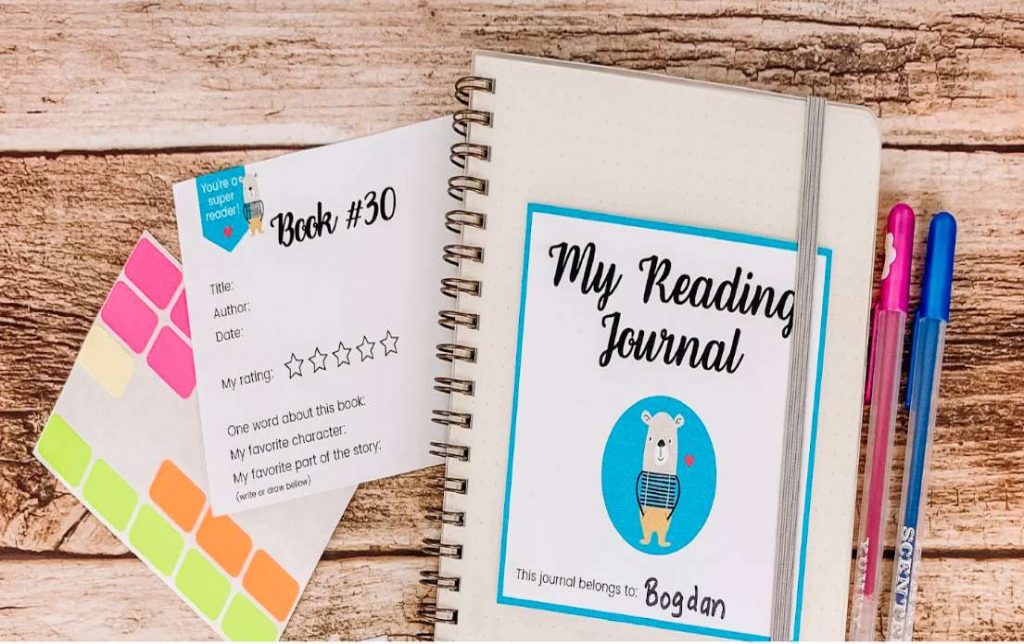
Encourage children to start a journal dedicated to the books they read. After finishing a book, they should write a summary, their thoughts, feelings, and what they learned or found interesting. They can also draw or paste pictures related to the story.
How it Helps:
Maintaining a reading journal helps children process and remember the stories they read. It encourages them to think critically about the content, themes, and characters. This reflective practice enhances comprehension and personal connection to the reading material.
Related Reading: Creative Journal Prompts for Kids
6. Story Mapping
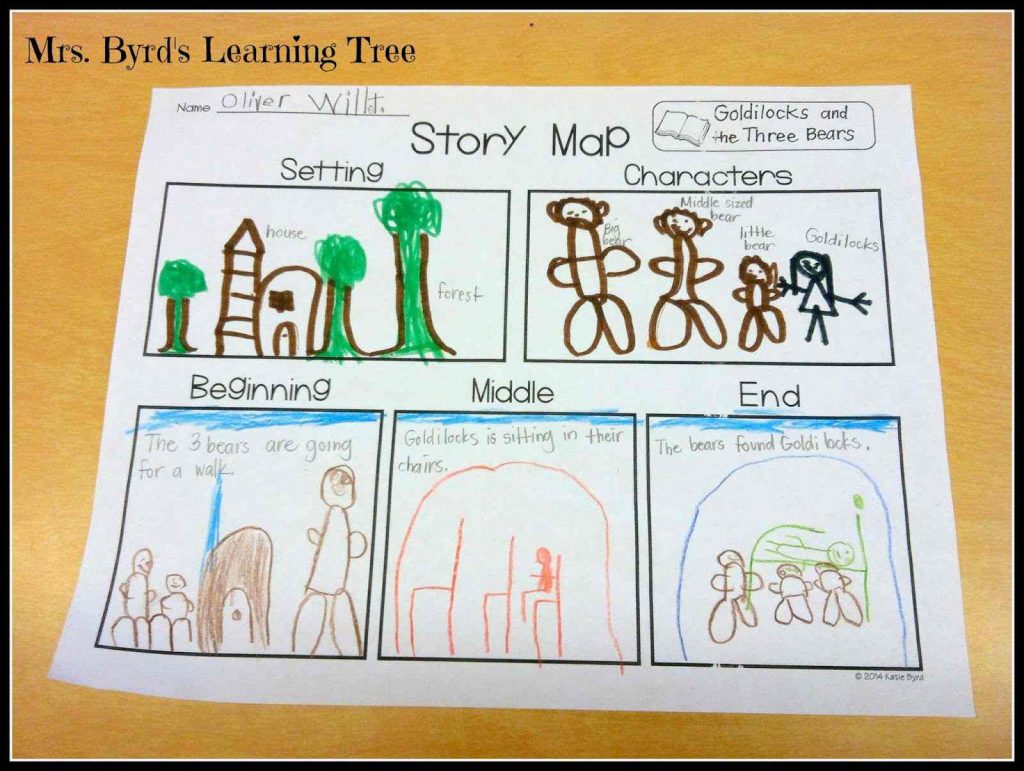
Begin by selecting a story that the child is familiar with or has recently read. Provide them with a blank sheet of paper and colored pencils or markers. Ask them to draw a map of the story’s main elements, such as the characters, setting, and major events in the plot. They can use symbols, illustrations, or even words to represent each element.
How it Helps:
Story mapping is one of the most effective fun reading activities that aids children in visualizing the story’s structure. It helps them understand the relationship between different parts of the story, enhancing their comprehension and retention.
7. Fill in the Blanks
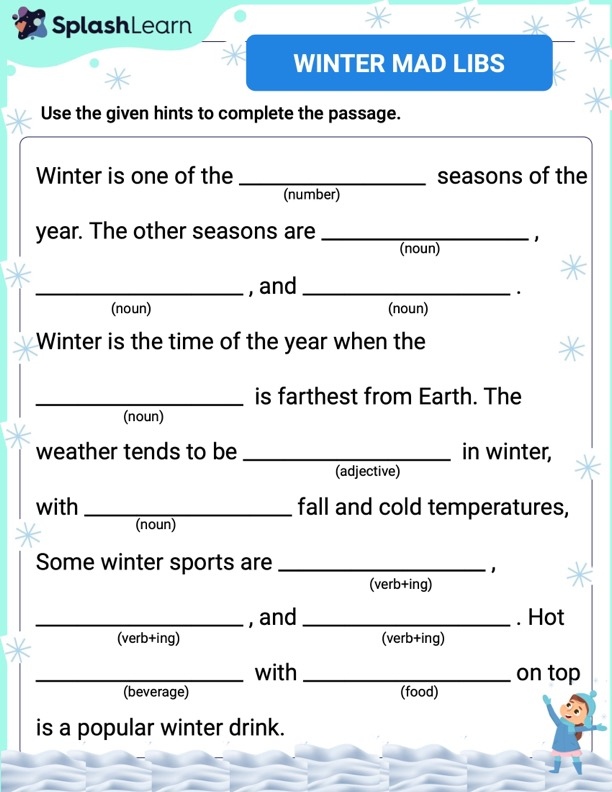
Create a worksheet or use a pre-made one where parts of a story or sentences are missing keywords. Ask the child to fill in these blanks based on their understanding of the context. This can be one of the more challenging reading games for kids, especially as they advance in reading levels.
How it Helps:
This activity tests and improves a child’s understanding of vocabulary and sentence structure. It encourages them to think about the story’s context and meaning, enhancing their overall comprehension and language skills.
8. Reading Comprehension Worksheets
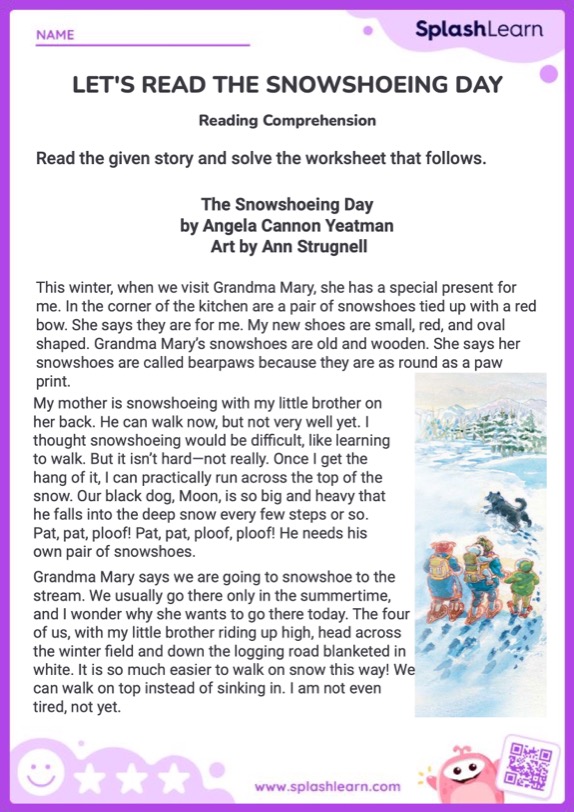
Use or create worksheets that contain a short passage followed by a series of questions about the text. These questions should cover aspects like the main idea, details, inference, and vocabulary. Worksheets can be one of the essential tools for after reading activities, ensuring that the child has understood the story.
How it Helps:
Reading comprehension worksheets are one of the best activities to improve reading comprehension and improve a child’s understanding of a text. They help in reinforce the concepts and ideas read, and in developing critical thinking and analytical skills.
9. Book Clubs for Kids
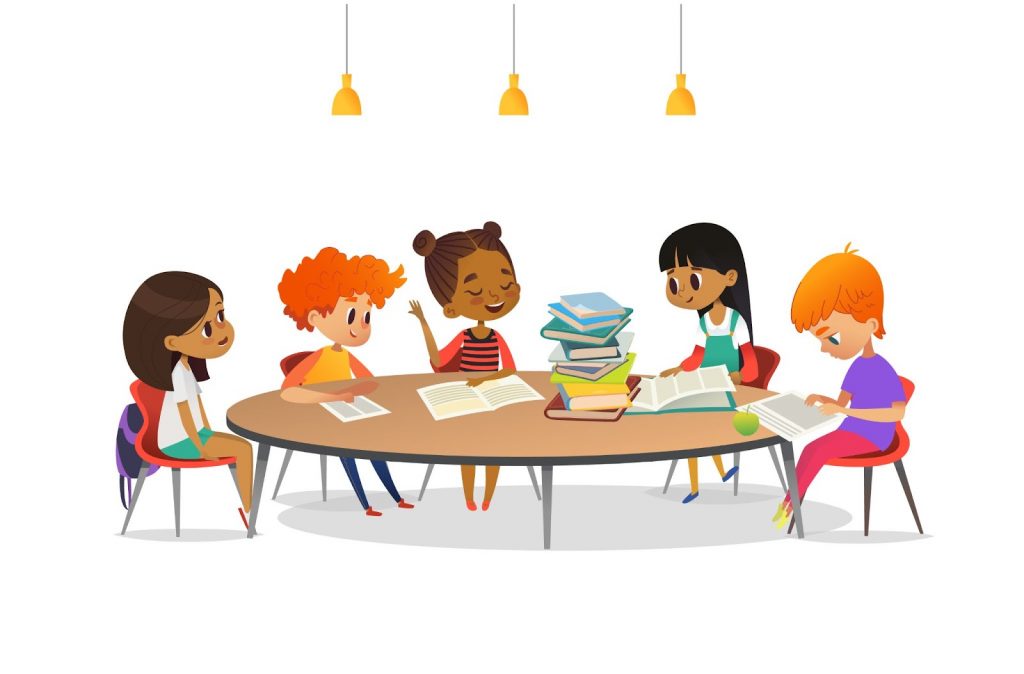
Organize a book club for children where a common book is read over a period. Schedule regular meetings where members discuss the book, share their views, and engage in related activities like quizzes or creative projects. This can be an excellent platform for comprehension games related to the book.
How it Helps:
Book clubs encourage children to read more attentively, knowing they’ll discuss it later with peers. It enhances their understanding and gives them different perspectives on the same material. The social element of discussing a book in a group can significantly boost comprehension and critical thinking skills.
10. Creating Storyboards
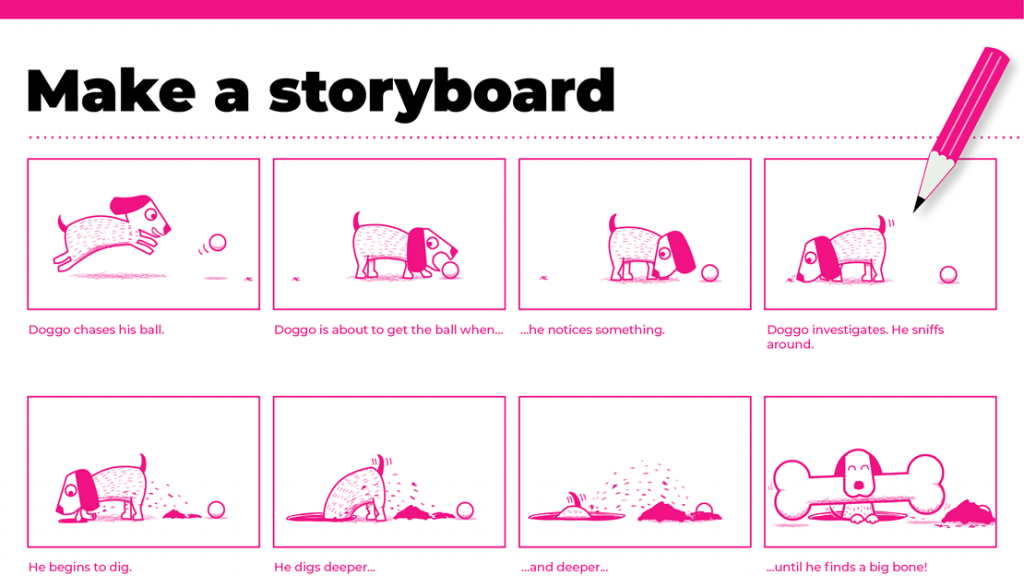
After reading a story, ask children to create a storyboard that outlines the narrative. They can draw scenes or use digital tools to represent key moments and plot progression. This activity is a creative form of during reading activities, as they can create parts of the storyboard as they progress through the story.
How it Helps:
Storyboarding helps children break down a story into its essential elements, making it easier to understand the sequence and structure. It is one of the most enjoyable activities for teaching reading comprehension in a visual and engaging way, helping to develop narrative skills and enhance memory of story details.
11. Predicting the Next Part
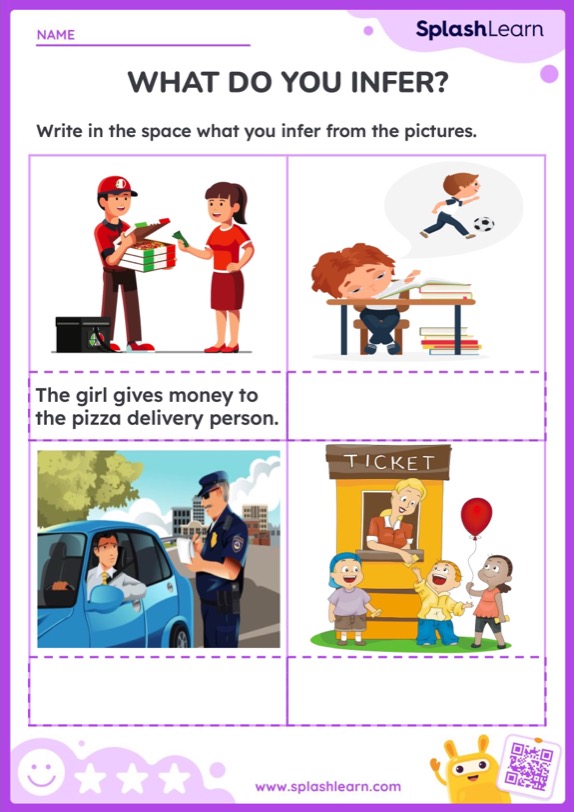
While reading a story, pause at an exciting point and ask the child to predict what might happen next. Encourage them to explain their reasoning. This is a stimulating during reading activity that keeps children engaged and thinking ahead.
To support this activity, these worksheets have kids read short stories or analyze visual prompts to predict what happens next. For example, they have to decide if a child planting seeds sees a sapling, an empty pot, or a full-grown tomato farm.
Other scenarios, like forgetting an umbrella on a rainy day or analyzing pictures of underwater animals, villagers pulling up a turnip, or kids finishing school, help develop logical reasoning, close reading, and creative thinking—making predictions both fun and interactive.
Begin here
How it Helps:
Predicting the next part of a story develops critical thinking and analytical skills. It encourages children to use clues from the text and their own reasoning to anticipate future events, enhancing their engagement and comprehension.
12. Using Technology and Apps
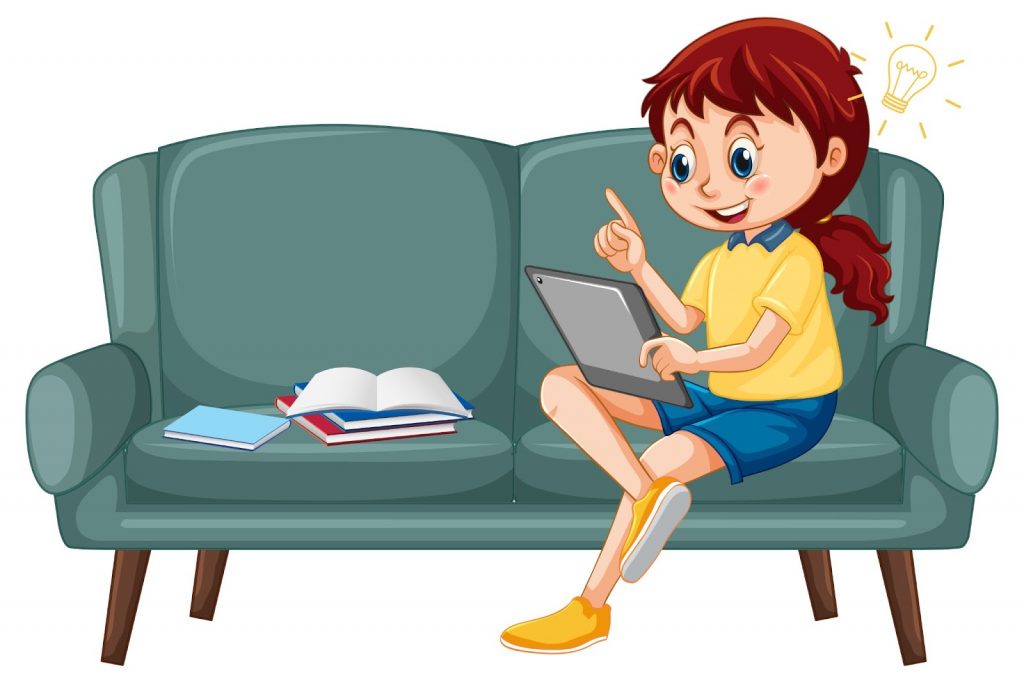
Begin here
Introduce children to educational apps and online resources that focus on reading comprehension. These can include interactive stories, quizzes, and games. Look for apps that offer a range of activities and cater to different reading levels. If you are looking for ESL reading comprehension activities, this could be a great option.
How it Helps:
Incorporating technology and apps like SplashLearn into reading education transforms the learning experience, making it more interactive and enjoyable. These tools use the principles of gamification effectively, turning reading comprehension into an exciting adventure. Children, especially those who thrive on comprehension games and interactive challenges, find this approach particularly appealing. Moreover, platforms like SplashLearn offer personalized learning paths, adapting to each child’s unique pace and comprehension level, ensuring that every child feels both challenged and successful in their learning journey.
Incorporating these activities into a child’s reading routine can significantly enhance their comprehension skills, making reading a more enjoyable and enriching experience.
Related Reading: How to Improve Reading Comprehension
Build Reading Comprehension with Online Books
Developing a reading habit in children is one of the most valuable gifts a parent or teacher can provide. However, instilling this habit is not always easy. Children need guidance, the right environment, and, most importantly, books that match their reading level.
Choosing the right book can make or break a child’s interest in reading. A book that is too simple may fail to challenge them, leaving them bored, while a book that is too complex may overwhelm them, causing frustration and disinterest.
Understanding your child’s current reading level is crucial to providing the right balance of challenge and engagement. Start with books that align with their abilities and gradually introduce more complex materials as their skills grow.
To make this process smoother, here are four types of books that grow with your child’s reading abilities:
1. Read-Aloud Books
Read-aloud books are an excellent way to introduce young children to the joy of reading. These sessions help improve listening skills, expand vocabulary, and foster early literacy. By reading aloud to children, parents and educators can create an interactive and engaging experience that makes books come alive. This approach also helps develop a strong emotional connection with reading.
2. Leveled Readers
Leveled readers are books designed to meet children at their current reading stage and help them progress. Each level introduces structured phonetic patterns, sentence structures, and vocabulary, providing a steady progression in reading abilities. As children become more confident, they can move to higher-level books, ensuring a seamless and motivating journey.
3. Decodable Books
Decodable books are a fantastic resource for children who are just starting to read independently. These books emphasize phonics, enabling children to decode and sound out words. By practicing letter and word recognition, kids build the foundational skills they need to read fluently.
4. Bedtime Stories
Bedtime stories are a classic way to end the day. These soothing, often inspirational tales help children relax and connect with their parents while fostering a love for storytelling. The routine of reading before sleep also supports emotional bonding and builds positive associations with books.
All these books come with:
- “Read to Me” or “Read by Myself” options: These allow children to explore stories independently or listen to them being read aloud.
- Tracking dashboards: Parents and educators can monitor progress, observe patterns, and identify areas needing support.
3 Importance of Reading Comprehension
Reading comprehension is not just about understanding words on a page; it’s a critical skill that has far-reaching implications for a child’s academic and personal development. Here’s why it’s so important:
- Long-term Academic and Personal Benefits: Good reading comprehension skills lay the foundation for all learning. Children who comprehend what they read are more likely to excel in school and enjoy learning. This skill also contributes to personal growth, enhancing general knowledge and cultural awareness.
- Developing Empathy and Social Understanding: Reading various texts, especially fiction, allows children to experience different worlds, cultures, and perspectives. This exposure is crucial in developing empathy, as it helps children understand and relate to emotions and experiences different from their own.
- Impact on Future Success: The ability to comprehend, analyze, and synthesize information is vital in almost every aspect of life. In the long run, strong reading comprehension skills are linked to career success, as they are critical for effective communication, problem-solving, and decision-making in many professions.
Related Reading: Easy Steps to Teach Kids to Read
5 Benefits of Reading Comprehension Activities
When we think of activities for reading comprehension, it’s easy to picture kids deeply engrossed in books, connecting with stories. But there’s more to it. Here are some key benefits:
- Skill Building: These activities strengthen a child’s ability to understand texts, making them confident readers.
- Vocabulary Boost: Fun reading comprehension activities introduce kids to new words, expanding their word bank.
- Thinking Deeply: They encourage kids to think beyond the words, understanding the underlying message or moral.
- Engagement: Instead of just passively reading, kids become active participants, making the reading process more interactive and enjoyable.
- Preparation for the Future: A strong comprehension foundation sets kids up for academic success and a lifelong love for reading.
In a nutshell, reading comprehension activities are not just tasks; they’re gateways to a world of knowledge, imagination, and growth.
Conclusion
Incorporating these reading comprehension activities into a child’s daily routine can transform how they interact with text, turning reading from a task into an adventure. By engaging in these fun and educational exercises, children not only enhance their understanding and retention of what they read but also develop crucial life skills like empathy, critical thinking, and creativity. As parents, educators, or guardians, our role in facilitating these experiences is invaluable, setting the foundation for a lifetime of learning, success, and a profound love for reading.
Don’t wait to make reading a favorite activity for your child. Sign up at SplashLearn and discover the joy of interactive learning!
Related Reading: How to Improve Reading Comprehension
Frequently Asked Questions (FAQs)
At what age should I start reading comprehension activities with my child?
You can start simple reading comprehension activities as early as age 3 or 4. Begin with storytelling and picture analysis, gradually introducing more structured activities as they grow.
How often should children engage in reading comprehension activities?
Daily reading is ideal, but incorporating reading comprehension exercises for kids 3-4 times a week is beneficial. Consistency is key to developing strong reading skills.
Can these activities be adapted for children with learning differences?
Absolutely! Many of these activities can be modified to suit different learning styles and needs. It’s important to tailor the approach based on the child’s individual challenges and strengths.










































